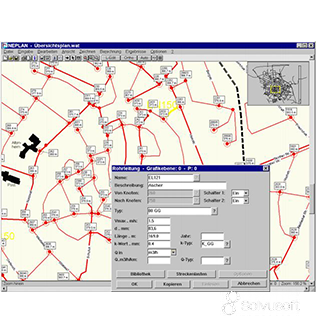

The value I3/Ir must be defined for a phase-dependent under impedance starter. The input of "Phi1" and "Phi2" is then unimportant. The value I3/Ir should set to zero for phase-independent under impedance starters. The relay will start if the line current and the line-earth voltage are in the starting area. In case of under impedance starter not only the line current, but also the voltage will be considered. 10.3 Phase-dependent under impedance starter 10.2 Phase-independent under impedance starterįig. Under Impedance The data are entered according to fig. A current limit can be defined for line-line and line-earth faults. Ir is the nominal current at primary side of the current transformer. The relay will start if the measured line current is larger than I1/Ir independent of the voltage. Pure Over current The input data are: U / Ur

On the other hand the starter R/Xcharacteristic cannot be defined for predefined relays, because it is determined by the setting parameters. The pure over current and the under impedance starter can be defined for userdefined relays as well as for predefined relays. The selection of the fault type will be done with “Data input” (“L_L” or “L-E”) in the dialog “Parameter” of the relay. All starter systems can be defined for line-line and line-earth faults. R/X-characteristic The starter system can be selected in the dialog “Starter” of the distance protection relay.Starter The following starter systems can be entered: The tripping time of the relays are displayed in the single line diagram. The evaluation or check of the relay settings can be done with a short circuit calculation. With menu option “Analysis-Distance protection-Protection device” the relay characteristic and the impedances seen by the relay in case of short circuits on nodes or lines are displayed in a R/X-diagram. This can be done in NEPLAN menu option “Analysis-Distance protection-Tripping schedules”.

The tripping schedules are built-up by the user. The predefined list will be displayed, when pressing the button "…" beside “Predefined type” in the dialog distance protection. The program will build up the characteristic. When selecting the relay type from a predefined list, the user will be able to enter the relay dependent setting parameters in a special dialog. The user in the dialog distance protection can enter the type of the relay. predefined relay type (relay type predefined by the program) The characteristic of a general relay can be entered in a R/X-diagram.user-defined or general relay (relay type given by the user).The module distinguishes two types of relays All impedance values shown in the module are calculated with a short circuit calculation according to the superposition method with or without load flow (see chapter "Short Circuit"). to get all voltage, current and impedance values (primary or secondary) seen by a relay due to a short circuit,.to enter distance protection relays with their settings or characteristics respectively,.Distance Protection Overview The module distance protection allows the user


 0 kommentar(er)
0 kommentar(er)
